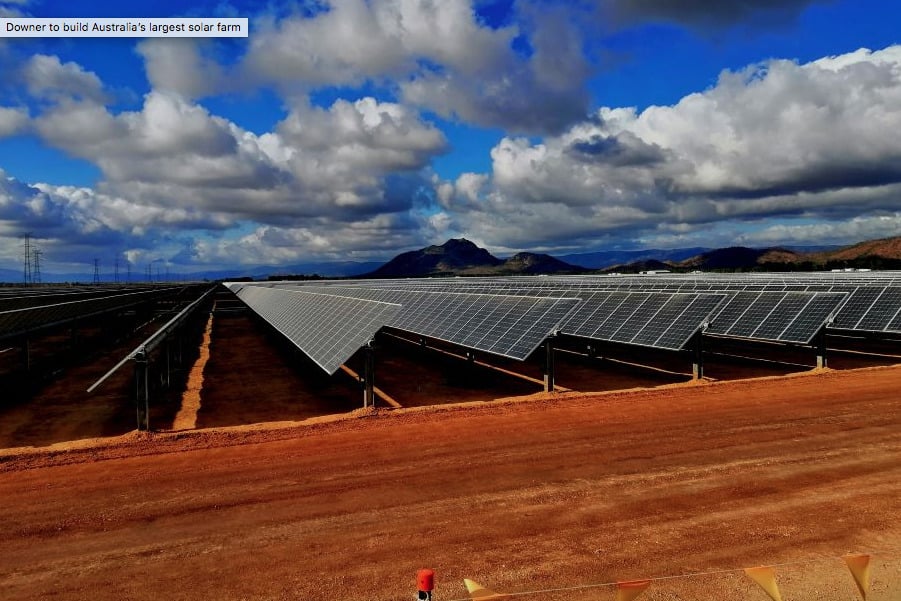
The government of New South Wales has earmarked AU$750 million (US$578.5 million) to invest in climate action projects in a bid to reach net-zero carbon emissions by 2050.
The funds will be used to provide grants over the next nine years for equipment upgrades, technology development and advancing the region’s green hydrogen energy generation. It is hoped the projects would help to cut the region’s emissions by 35% by 2030.
Unlock unlimited access for 12 whole months of distinctive global analysis
Photovoltaics International is now included.
- Regular insight and analysis of the industry’s biggest developments
- In-depth interviews with the industry’s leading figures
- Unlimited digital access to the PV Tech Power journal catalogue
- Unlimited digital access to the Photovoltaics International journal catalogue
- Access to more than 1,000 technical papers
- Discounts on Solar Media’s portfolio of events, in-person and virtual
In its Industries and Innovation Program published this week, the government noted that the top 55 industrial facilities in NSW contributed to around 30% of the region’s carbon emissions.
Environment minister Matt Kean said that the new funding could create a “clean industrial revolution”.
“Supporting their modernisation to cleaner equipment, technology and processes will significantly reduce emissions,” he said, “while helping to protect jobs and maintaining a resilient economy.”
The report outlines three key areas to focus investment: clean technology innovation, new low carbon infrastructures, and targeting high emitting industries.
AU$195 million of the funding package will be dedicated to clean technology innovation, AU$15 million of which will be used to set up a Decarbonisation and Innovation hub to accelerate renewable energy development and growing an “environmentally sustainable NSW hydrogen industry”. A furtherAU$75 million has been set aside for commercialisation and pilot grants, AU$40 for research and development grants, and up to AU$20 million for developing low emission standards policies and “unlocking sustainable finance” from private investors.
NSW’s industrial areas such as the Hunter and Port Kembla could become “global clean industry leaders” if significant changes are made to their infrastructure and power mix, Nicki Hutley, a spokesperson for Australian campaign group Climate Council, said.
“They need policy support and funding to adapt to a world where Australia’s major trading partners are moving towards net zero emissions, and demand for low-carbon products is growing.”
In its own Clean Jobs Plan, the Climate Council has said that around 15,000 jobs could be created by installing utility-scale renewable energy such as solar, transmission infrastructure and utility-scale batteries to Australia’s grids.
Hutley welcomed the government’s announcement, but warned it “must be implemented carefully to track emissions reductions and business benefits, and the focus must be on a genuine transition to clean industry rather than propping up the role of fossil fuels.”
New South Wales is already set to host 12GW of renewable generation assets and 2GW of energy storage by the end of the decade as part of the Australian state’s Electricity Infrastructure Roadmap. The framework is expected to stimulate AU$32 billion (US$23.3 billion) of private sector investment and create more than 9,000 jobs.
Other regions have also announced substantial investment packages to scale up their net-zero emissions goals. Around AU$1.2 million has been set aside to research the feasibility of an “electricity superhighway” based on high voltage direct current transmission links in the Northern Territory, while Victoria is currently exploring the possibility of adding at least 600MW to the grid. Western Australia has also laid the groundwork for a AU$66.3 million stimulus package focusing on green energy technologies, and the Queensland government announced a four-year investment plan to build publicly-owned wind and solar farms last December.
Australia’s renewables development continues to exceed analysts’ expectations, with market research group Fitch Solutions revising a previous estimate for the sector’s growth earlier this month. It now believes renewable energy generation will make up 30% of the country’s power mix by 2030, up from a projection of 24.7% last June.







